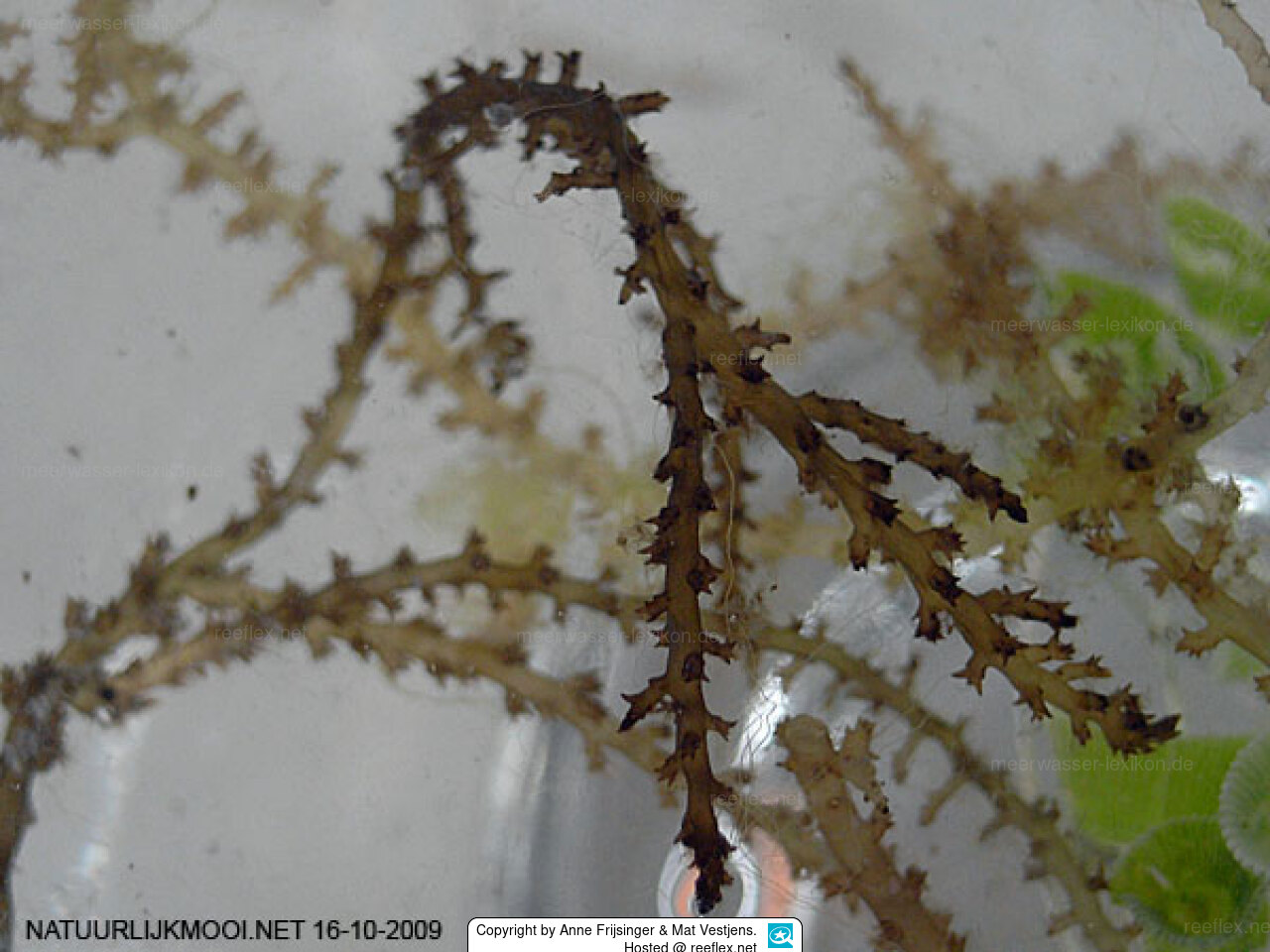Info
Acanthophora spicifera (M.Vahl) Børgesen, 1910
This red alga is widespread in the tropics and subtropics. The color is very variable (e.g. red, brown). Acanthophora spicifera grows on various substrates, such as hard soils, as an epiphyte on other algae or floating freely in the water.
Acanthophora spicifera has a spiny appearance, is brittle and easily fragmented. In strong waves, many fragments break off and form a large part of the free-floating algae biomass in the sea. If the algae grows upright on hard bottoms, it begins to branch out.
The algae can reproduce both sexually and vegetatively (fragmentation).
It is very adaptable and has a high reproductive potential. A new alga grows from even the smallest tissue remnants.
Acanthophora spicifera is readily eaten by herbivorous fish and turtles.
Biota > Plantae (Kingdom) > Rhodophyta (Phylum) > Eurhodophytina (Subdivision) > Florideophyceae (Class) > Rhodymeniophycidae (Subclass) > Ceramiales (Order) > Rhodomelaceae (Family) > Chondrieae (Tribe) > Acanthophora (Genus)
This red alga is widespread in the tropics and subtropics. The color is very variable (e.g. red, brown). Acanthophora spicifera grows on various substrates, such as hard soils, as an epiphyte on other algae or floating freely in the water.
Acanthophora spicifera has a spiny appearance, is brittle and easily fragmented. In strong waves, many fragments break off and form a large part of the free-floating algae biomass in the sea. If the algae grows upright on hard bottoms, it begins to branch out.
The algae can reproduce both sexually and vegetatively (fragmentation).
It is very adaptable and has a high reproductive potential. A new alga grows from even the smallest tissue remnants.
Acanthophora spicifera is readily eaten by herbivorous fish and turtles.
Biota > Plantae (Kingdom) > Rhodophyta (Phylum) > Eurhodophytina (Subdivision) > Florideophyceae (Class) > Rhodymeniophycidae (Subclass) > Ceramiales (Order) > Rhodomelaceae (Family) > Chondrieae (Tribe) > Acanthophora (Genus)







 Anne Frijsinger & Mat Vestjens, Holland
Anne Frijsinger & Mat Vestjens, Holland






